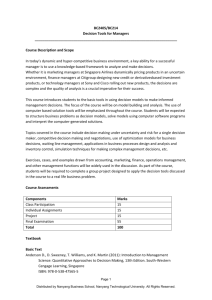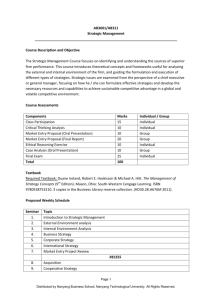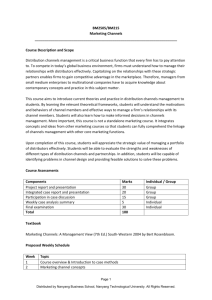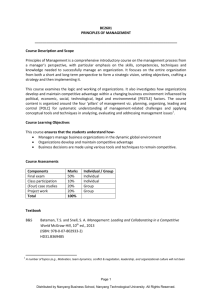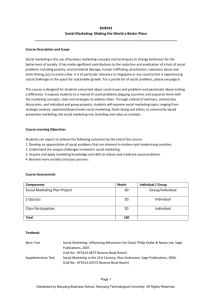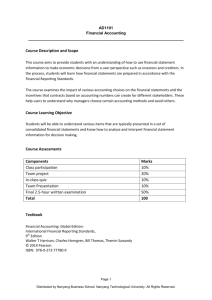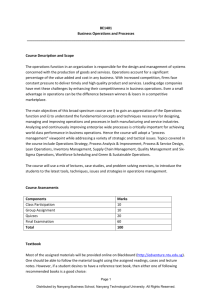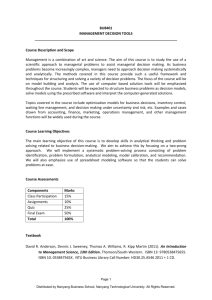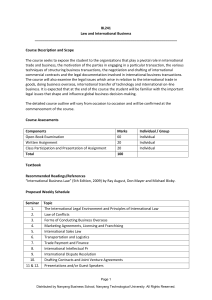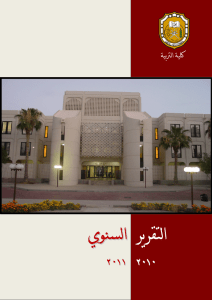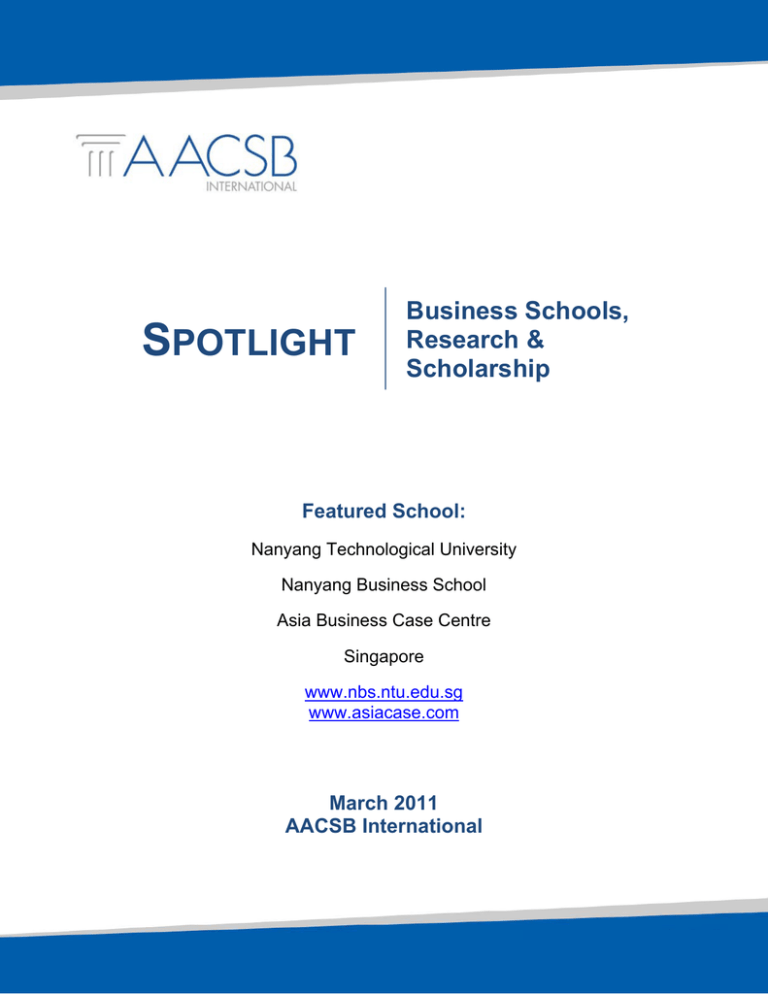
SPOTLIGHT
Business Schools,
Research &
Scholarship
Featured School:
Nanyang Technological University
Nanyang Business School
Asia Business Case Centre
Singapore
www.nbs.ntu.edu.sg
www.asiacase.com
March 2011
AACSB International
SPOTLIGHT | Business Schools & Research/Scholarship
Nanyang Technological University | 2
The Asia Business Case Centre
The Asia Business Case Centre (ABCC) serves many purposes for the business school at Nanyang
Technological University. The ABCC is designed to be a one-stop electronic resource for writers and
users of case studies focused on Asian business contexts. It aims to build a community of business
researchers interested in these contexts, both those affiliated with Nanyang Business School (NBS) and
with other schools around the world, and to provide an outlet for their scholarly productivity. The Centre
supports students of the Nanyang Business School as well, providing case studies for their research and
projects and supporting case competitions organized by student clubs. The ABCC also works to build
understanding of national, economic, and cultural factors in Asia and how they affect the Asian and global
business environments.
Auspicious Beginnings
According to Dr. Wee Beng Geok, Director of the ABCC and Associate Professor at the Division of
Strategy, Management and Organisation, Nanyang Business School, strong administrative support for the
ABCC’s mission has been an important factor in its success. When she first joined the school in 1999,
(then) Dean Neo Boon Siong had proposed an initiative to promote case writing by the Nanyang Business
School faculty. Dr. Wee felt that such an effort would work best if focused on Asian companies and
environments, the aim being to expand what she saw as an extremely limited resource pool of teaching
case studies focused on Asian business and management practices.
The ABCC was founded in 2000 with support from The Lee Foundation, a major Singaporean
philanthropic organization,1 which Dr. Wee describes as both generous and fortunate for the Centre and
its mission, as generating funding is always one of the biggest challenges for research centers such as
the ABCC. To encourage the use of case studies, she set up an e-catalog containing abstracts of Asian
cases by major case publishers including Harvard Business School, the Richard Ivey School of Business
at the University of Western Ontario, Thunderbird School of Global Management, and Switzerland’s IMD
(with due permissions), to promote access to cases among professors so that they could easily find what
was available and incorporate them into their curricula. At the same time, the ABCC’s electronic portal
www.asiacase.com was launched to stimulate interest in case writing among faculty and to house and
promote the case studies published by the Centre. Dr. Wee says that having the ABCC do its own
desktop publishing has been good for the Centre, particularly in terms of mitigating the costs associated
with publishing activity.
In the same year, the ABCC also began a strategic collaboration with the Richard Ivey School, which was
already known as a leading producer of case studies focused on the Asia-Pacific region, to “jointly write
© AACSB International. All Rights Reserved.
SPOTLIGHT | Business Schools & Research/Scholarship
Nanyang Technological University | 3
case studies and encourage the use of case studies in Singapore and Asia.”2 Over the next five years,
faculty and research associates from NBS and the Ivey School worked together to produce numerous
cases focused on Asia. According to Dr. Wee, Ivey School faculty also gave courses and workshops on
writing and teaching with case studies to the NBS faculty involved with the ABCC, both as a way to
develop capacity and to encourage such involvement. Additionally, as part of the collaborative agreement
under the Lee Foundation sponsorship, the faculty of NBS, as well as those of the National University of
Singapore (NUS) Business School and the Singapore Management University, were granted unlimited
access for eight years to the Ivey School’s existing case resources, with ABCC managing the
infrastructure to support their use.3
Expanding the Field
Dr. Wee says that building faculty excitement about writing and teaching with cases takes time (in
ABCC’s case about three years), but demonstrably pays enormous dividends. The ABCC now has a
large number of faculty that regularly contribute, including approximately 40 from NBS itself, 11 from other
academic units at Nanyang Technological University (e.g., engineering, communication, etc.), and some
18 others from universities around the world. Submitted cases, however, must naturally withstand the
editorial process. After all, as Dr. Wee notes, maintaining high quality is vitally important for demonstrating
the value proposition of the ABCC.
Under its web portal, ABCC also set up the “Asian Case Collection,” an e-journal, where case studies
written by academic faculty regardless of their affiliation are published. Inspection copies of these cases
are free for download. The ABCC’s e-catalog of cases and case abstracts focused on Asia has grown
substantially over the years. In 2011, with increased faculty familiarity in regard to direct access to the
major case publishers, the decision was taken to phase out the e-catalog and provide direct links to the
major case websites.
In addition to contributors from the faculty, the ABCC employs five full-time staff members, including
research associates, case writers, and a database/website manager. There are also a number of projectbased employees, such as independent translators and editors, working on another important initiative of
the ABCC designed to increase access to case study material in the Asian context, namely the work of
translating the ABCC case collections into Chinese. According to Dr. Wee, the translation initiative is
driven by NBS program directors. NBS has a significant number of Chinese-focused programs, including
an EMBA program based in Shanghai and Beijing focused on developing Chinese managers,4 and having
case materials available in Chinese is highly valuable for this program. Dr. Wee notes that though English
remains the most common language in which scholarly material is published, the challenge of translation
is not just a question of being bilingual. There are concepts and terms in English that must be understood,
© AACSB International. All Rights Reserved.
SPOTLIGHT | Business Schools & Research/Scholarship
Nanyang Technological University | 4
and are not easily translated, into various Asian contexts, particularly the Chinese. The work of the
translation initiative progresses slowly but steadily, she says, as more than 20 individual cases and at
least two books of case studies have been successfully translated thus far.5
The Centre’s work also involves collaborations with various government and industry partners on casestudy projects, for example the Design Singapore Council, the Maritime Port Authority (MPA) of
Singapore, and the Singaporean Ministry of Manpower. Each such collaboration is designed to reach out
to students and the wider community in an effort to contribute to the understanding of issues that pertain
to these sectors and businesses. For example, Dr. Wee notes, Singapore has one of the busiest and
most important seaports in the world, and yet the case literature on maritime and transshipment issues in
the Singaporean context had been extremely spare. The MPA and ABCC collaboration created a series
of cases that “expand understanding and scholarship of this important sector of Singapore's economy.”6
ABCC’s work with the Ministry of Manpower resulted in a substantial report on strategic issues
surrounding an aging workforce.7 Most recently, the ABCC published a book of best practice cases in the
Asian hospitality industry in collaboration with the Cornell-Nanyang Institute of Hospitality Management.8
The ABCC undertakes a number of student support-oriented activities as well. For the past five years, the
ABCC has been writing cases to be used in the finals of the annual International Asian Business Case
Competition, organized by undergraduate students at NBS.9 She says that the competition has been very
useful to help the students focus on practical applications of business research, particularly in light of the
fact that the case-focused student club, Business Solutions, organizes and runs the competition itself.
Additionally, the ABCC web portal hosts a Student Resources page, which includes cases written by
student contributors and links to case study material for use in projects and research.
Looking Ahead
According to Dr. Wee, the ABCC’s biggest current project is developing a number of cases focused on
the management of non-profit, philanthropic, charitable, and other social welfare organizations. As with
cases previously developed for other sectors of the economy, it is expected that this new series will see
strong use in NBS’ executive education programs, as well as seminars and workshops focused on
management of the social welfare sector.
Dr. Wee says that the best thing that a research center such as the ABCC can do for itself and its
stakeholders is to consistently look for such areas of perceived need, where case research can usefully
contribute to greater understanding. There is still great need, she notes, for more cases set within the
different contexts of Asia, as there is a great deal of variation both between and within national and
cultural boundaries. It is therefore important to stay in touch with the needs of local communities, and
© AACSB International. All Rights Reserved.
SPOTLIGHT | Business Schools & Research/Scholarship
Nanyang Technological University | 5
learn how best to add value to the knowledge pool, be it for businesses, academics, government
regulators, or other institutions.
Acknowledgements: AACSB International is grateful for the assistance of Dr. Wee Beng Geok, Director of
the Asia Business Case Centre, and Ms. Ivy Buche, Asia Business Case Centre research associate.
© AACSB International. All Rights Reserved.
SPOTLIGHT | Business Schools & Research/Scholarship
Nanyang Technological University | 6
End Notes
1
Nanyang Business School, Asia Business Case Competition. (2010) Our Sponsors web page. Electronic document, http://www.abcc.com.sg/ABCC/Our_Sponsors.html, accessed March 3, 2011. 2
Asia Business Case Centre. (2011) The Nanyang Case Collection. Electronic document, http://www.asiacase.com/nanyangCase.asp, accessed March 4, 2011. 3
Richard Ivey School of Business, Asian Management Institute. (2005) “Ivey Business School and The Nanyang Business School Partnership.” Electronic document, http://www.ivey.uwo.ca/ami/Asian_Cases/Ivey_Nanyang.htm, accessed March 4, 2011. 4
Nanyang Business School. (2011) Nanyang EMBA Home Page. Electronic document, http://www.emba.ntu.edu.sg/Pages/Home.aspx, accessed March 4, 2011. 5
Asia Business Case Centre. (2011) Chinese Case List. Electronic document, http://www.asiacase.com/chn/chineseCaseList.html, accessed March 4, 2011. 6
Asia Business Case Centre. (2011) The MPA‐ABCC Collection. Electronic document, http://www.asiacase.com/indProj‐mpa.html, accessed March 4, 2011. 7
Wee Beng Geok, Chung Sang Pok, and Quek Pek Noi. (2002) “The Employment of Mature and Older Workers: Strategies for Managing Work and Career Transitions.” Electronic document, http://www.asiacase.com/pdf/indproj/momReport.pdf, accessed March 4, 2011. 8
Siguaw, Judy, and Wee Beng Geok. (2008) Exploring Best Practices in the Hospitality Industry in Asia. The Asia Business Case Centre, Nanyang Technological University, Singapore. 9
Nanyang Business School, Asia Business Case Competition. (2010) Asia Business Case Competition Home Page. Electronic document, http://www.abcc.com.sg/ABCC/Asian_Business_Case_Competition_‐
_Nanyang_Business_School.html, accessed March 4, 2011. © AACSB International. All Rights Reserved.

